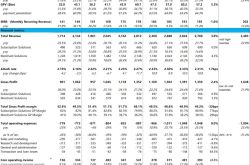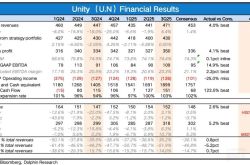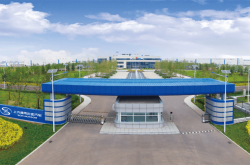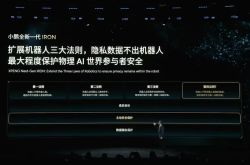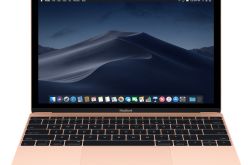DeepSeek Raid: Heralding a Technological Power Shift?
![]() 02/05 2025
02/05 2025
![]() 605
605
Author|Joanne Gu Editor|Evan
"The overreaction of the capital market underscores the fragility of the previous burn-money model bubble."
Much like an unknown domestic indie film surpassing a big-budget Hollywood blockbuster at the box office, the thrilling events at DeepSeek, a Chinese large model company, over the past 24 hours have significantly impacted U.S. stocks.
DeepSeek's uniqueness stems from its ability to create the 671 billion-parameter DeepSeek-V3 model using just 2048 NVIDIA H800 GPUs at a cost of $5.576 million, achieved through optimized model architecture despite limited computing resources. Peer models with similar parameter sizes cost approximately $1 billion, and the inference cost of its newly launched DeepSeek-R1 model is one-thirtieth that of OpenAI's latest model (GPT-4).
Despite doubts about its authenticity, panic temporarily gripped Wall Street—a more cost-effective solution has emerged, raising questions about whether the Silicon Valley valuation system centered on high computing power and costs will endure.
On January 27, the same day DeepSeek topped the free app download charts in both the Apple App Store in China and the U.S., the Nasdaq Composite Index fell 3.07%, the S&P 500 Index declined 1.46%, and AI computing power "arms dealer" NVIDIA plummeted over 17%, erasing over $560 billion in market value and wiping out all gains for the year in a single day. This set a new record for the largest single-day market value loss in U.S. stock market history and led to a collective dive in chip stocks: Broadcom fell over 17%, AMD over 6%, and ASML over 5%. Additionally, Google, Tesla, and Microsoft also experienced declines of varying degrees.
Currently, Silicon Valley AI giants are scrutinizing DeepSeek's technology to verify the feasibility of its development path. This concern not only casts doubt on the existing AGI valuation system but also poses a significant challenge to the U.S. tech industry and the Trump administration. If DeepSeek has indeed discovered a cheaper solution as claimed, this suggests a failure of U.S. export controls on advanced AI to China. For Silicon Valley AI models accustomed to leading the world, balancing self-revolution with closed protection may prove more difficult than addressing DeepSeek itself.
Will DeepSeek's significant impact on U.S. tech stocks mark the beginning of a technological power shift?
01
Popping the AI Bubble
Currently, external doubts about DeepSeek primarily focus on three points:
First, doubts about costs. Bernstein analysts contend that it's improbable for DeepSeek to have developed its model with just $5.6 million in computing power, as claimed. They believe this figure overlooks other associated costs involved in developing its AI model.
Second, doubts about originality. DeepSeek leverages open-source technology based on Llama and OpenAI's large models, suggesting it's not a 0-1 technology but rather a 1-10 enhancement. In other words, the advantages of the DeepSeek model might not be possible without the foundation laid by OpenAI and Meta, but rather amplify precision through engineering methods.
Lastly, many in the market believe the sharp decline in U.S. tech stocks' market value was a conspiracy orchestrated by hedge funds and the media, with short-sellers exaggerating the impact of DeepSeek to induce panic and profit from it.
Despite numerous doubts, stock market volatility may be short-lived. However, in the long run, the question surrounding the subsequent impact of DeepSeek revolves around whether this low-cost approach will alter Silicon Valley's AI competition strategy and market logic.
Historically, Silicon Valley AI companies like OpenAI and Anthropic have attracted substantial funding, with valuations reaching tens of billions of dollars. UBS data from 2024 revealed that major U.S. tech companies spent $224 billion on AI capital expenditures that year, expected to rise to $280 billion in 2025. However, if the DeepSeek approach proves successful, it implies a reversal of the existing AI investment logic.
The first to be affected is the valuation of U.S. companies. NVIDIA is the prime beneficiary of the generative AI boom. Previously, founder Jensen Huang repeatedly emphasized the robust demand for GPU chips, with the global data center market reaching $250 billion and growing at a rate of 20% to 25% annually. This sustainability ensures NVIDIA's continued growth. Conversely, if companies like DeepSeek can demonstrate that powerful AI models can be trained without expensive, top-tier GPUs, NVIDIA's current valuation will become unsustainable.
NVIDIA responded to media inquiries about stock price fluctuations, stating that DeepSeek represents a remarkable AI advancement and an exemplary case of scalability during testing. DeepSeek's research demonstrates how to leverage this technology to create new models with widely available models and computing power fully compliant with export control regulations. Nevertheless, the inference process still requires a substantial number of NVIDIA GPUs and high-performance networks.
On January 21, the Trump administration launched the "Stargate" project, aiming to establish the U.S. as a "computing power empire." This is a large-scale investment plan for AI infrastructure, jointly developed by OpenAI, SoftBank, Oracle, and other companies, with a planned investment of $500 billion over the next four years to build infrastructure supporting AI development in the U.S. The initial investment of $100 billion aims to establish data centers for training and running AI models. The rationale behind this investment is to extend the U.S.'s lead in AI technology over other countries through massive AI computing power investments.
However, the capital market's overreaction highlights the precariousness of the previous burn-money model bubble. Regardless of whether the DeepSeek approach can be replicated, the market will likely reassess the AI development path.
Citibank believes that post-DeepSeek, discussions on computing costs will rise as a pivotal topic. Nonetheless, U.S. tech companies won't abandon the competition for advanced chips, evidenced by the U.S. government's announcement of a $500 billion "Stargate" investment.
For the industry, DeepSeek's high cost-effectiveness may compel Silicon Valley to reassess its R&D strategies, potentially accelerating the shift from closed-source to open collaboration models. It's reported that Meta has formed four research groups to evaluate how DeepSeek operates.
DeepSeek may also expedite the adjustment of venture capital firms' investment strategies. Previously, startups with higher computing power were favored by capital, but in the future, teams like DeepSeek, focusing on low-cost and efficient solutions, may attract greater attention.
Microsoft CEO Satya Nadella remarked at the World Economic Forum in Davos that DeepSeek's new model is impressive, and open-source models excel in inference computing. China's progress in this domain must be taken very seriously.
02
What Does Trump Think?
The second potential impact of DeepSeek is its effect on the Trump administration's AI export control policies towards China. DeepSeek does not utilize the most advanced AI chips.
DeepSeek stated that it employs less advanced NVIDIA H800 chips, which were still permissible for export to China by the U.S. government before October 2023. DeepSeek's founder and CEO, Liang Wenfeng, also emphasized in an interview last year, "Money has never been our problem. The restrictions on advanced chips from the U.S. are the problem." NVIDIA today confirmed that the chips used by DeepSeek are fully compliant.
This contradicts the current U.S. AI restriction logic. The Biden administration has imposed stringent restrictions on the flow of high-end chips to China since October 2022, with four escalations in the final three months of Biden's term. The objective is to hinder China's development of cutting-edge AI by restricting chips. However, DeepSeek has proven that under these restrictions, Chinese companies are compelled to find alternative routes—not relying on cutting-edge chips but rather discovering more efficient and cost-effective ways to train their models.
This implies that current U.S. chip controls might inadvertently accelerate China's lead in the AI competition from another angle, and these controls haven't slowed down China's AI progress as anticipated.
Furthermore, there's industry discussion that DeepSeek's success can't be disassociated from the contribution of U.S. open-source models. Considering the Biden administration's contemplation of imposing export controls on open-source models, whether the U.S. will restrict China's participation in open-source models is also a potential policy shift in the future. However, from a policy perspective, it's challenging to completely prohibit open-source technology since all developers can participate.
There have been calls for the Trump administration to tighten controls. On January 27, U.S. congressmen urged the Trump administration to implement stricter export restrictions to prevent China from making further progress in AI.
However, some in the industry believe that DeepSeek demonstrates the undesirability of the current chip control approach. As previous layers of restrictions by the Biden administration sparked backlash from the U.S. tech community, it's anticipated that the DeepSeek incident will prompt more U.S. chip companies to pressure and lobby policymakers to alter their control approach.
Pat Gelsinger, the former CEO of Intel, acknowledged the engineering prowess of the Chinese team, stating, "Engineering is about dealing with constraints. Export controls limit resource availability, so Chinese engineers need to be creative, and they indeed have been."
Last week, Trump signed an executive order revoking a Biden administration regulation related to AI development, claiming these regulations hindered AI industry development. David Sachs, the White House's point person on AI and cryptocurrency, believes that DeepSeek's success shows the fierce AI race, and the U.S. cannot be complacent. He also supports Trump's repeal of former President Biden's executive ban.
On January 28, Trump stated that DeepSeek served as a wake-up call for the U.S. industry, emphasizing the need to focus on winning the competition. He said, "I've been reading about Chinese companies, especially one that has launched a faster and cheaper AI, these past few days. This is good because you don't have to spend so much money, and I view this positively."
Regardless, it's inevitable that DeepSeek has captured the attention of the mainstream U.S. tech community and the Trump administration. In other words, amidst the technological competition between China and the U.S., DeepSeek has emerged as a new variable, and any future decisions and actions will inevitably be influenced by external forces.
In the early morning of January 28, DeepSeek announced the release of the open-source multimodal AI model Janus-Pro, where Janus-Pro-7B outperformed OpenAI's DALL-E 3 and Stable Diffusion in the GenEval and DPG-Bench benchmarks.
End Interaction: What are your thoughts on Chinese entrepreneurship in Silicon Valley? Share your opinions in the comments section!


